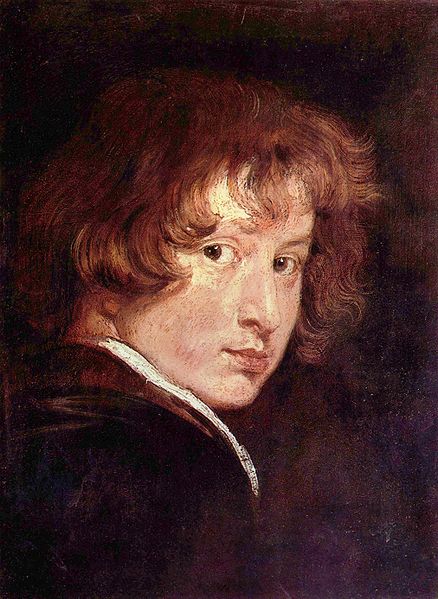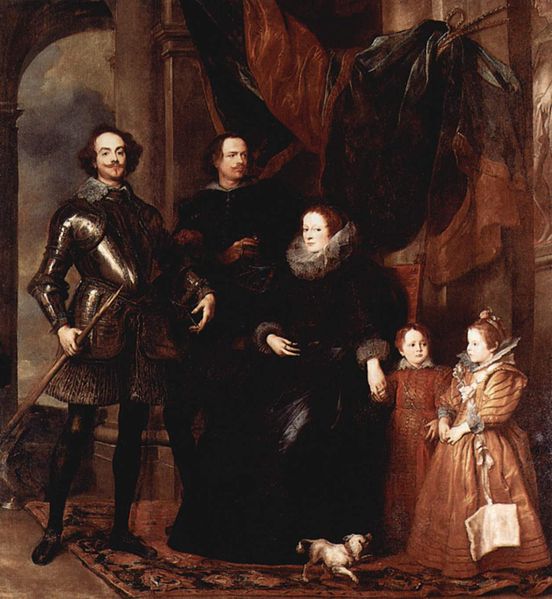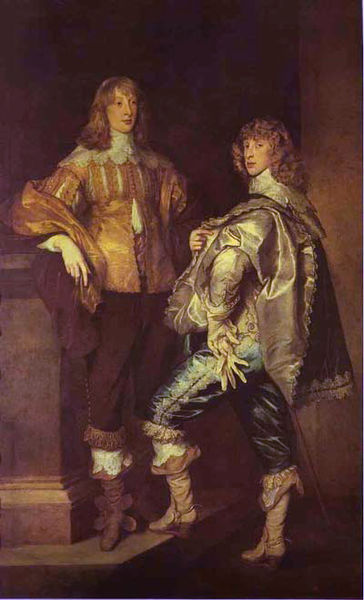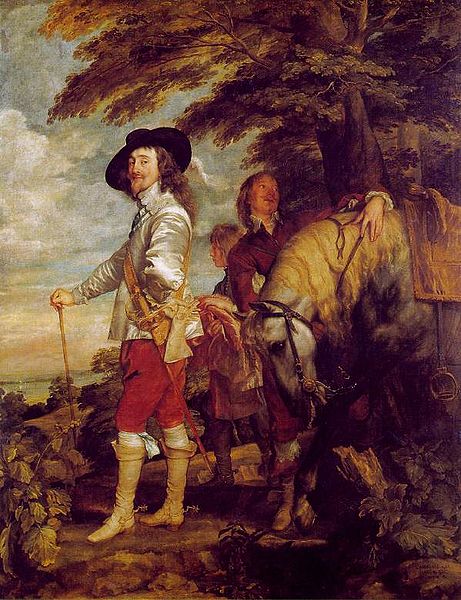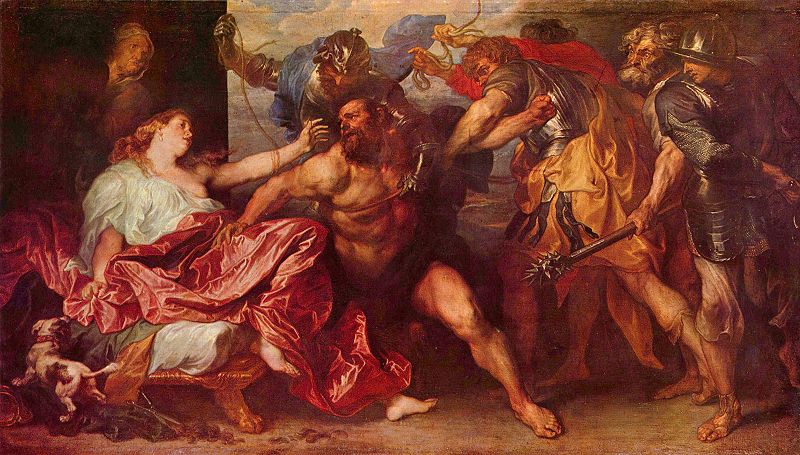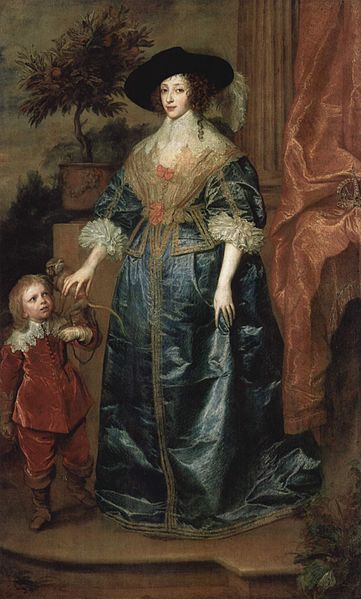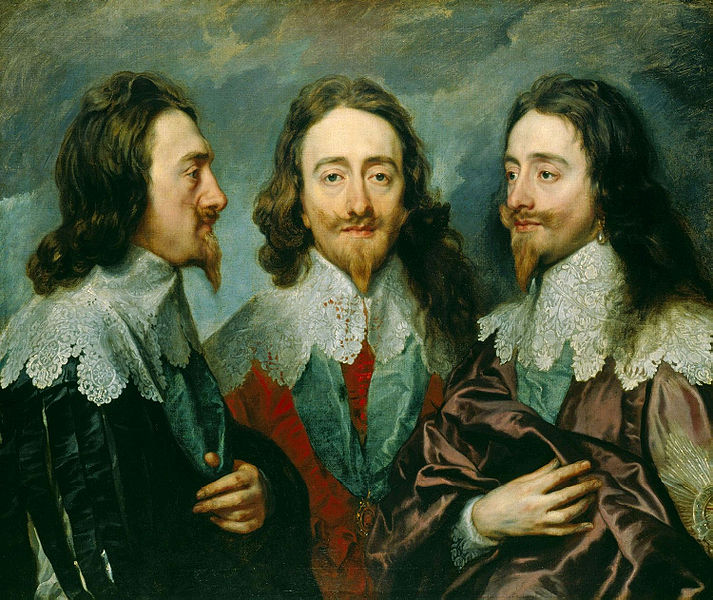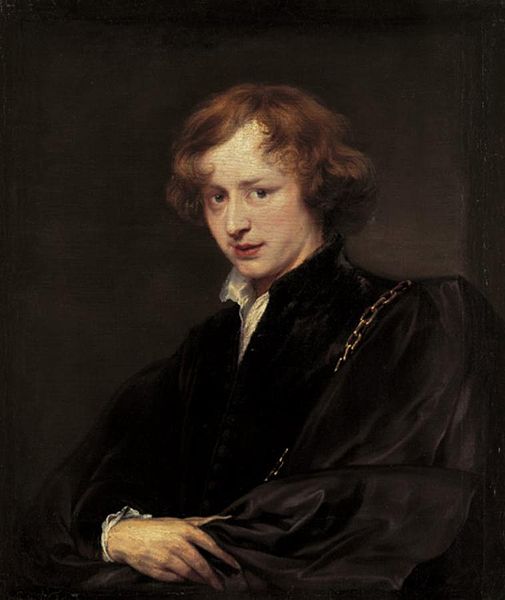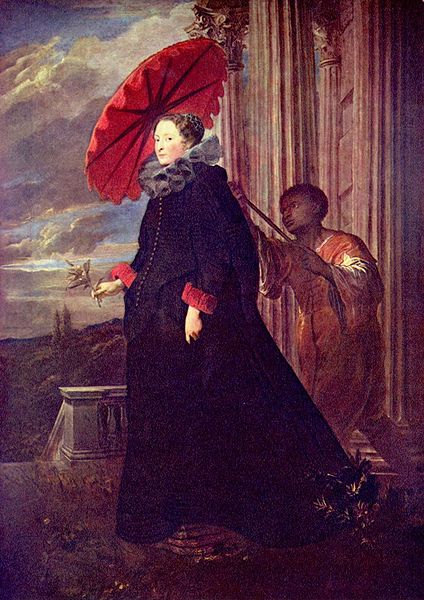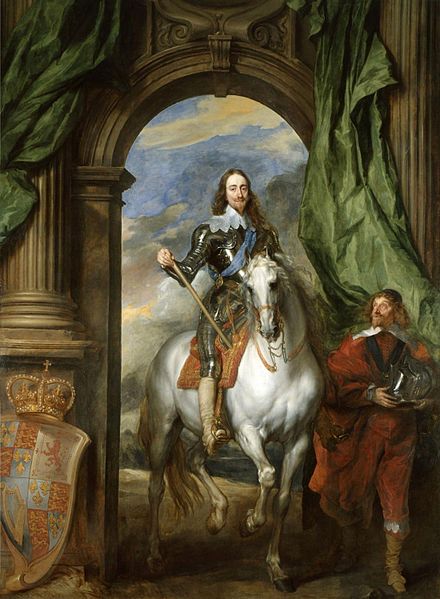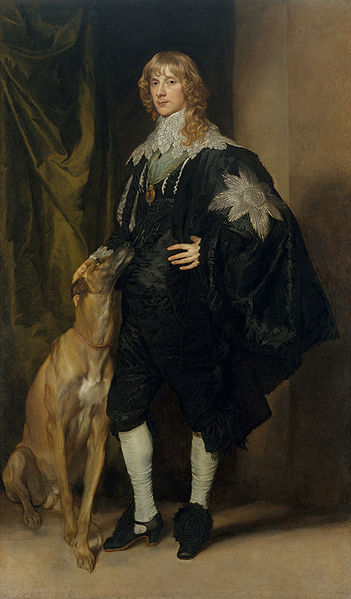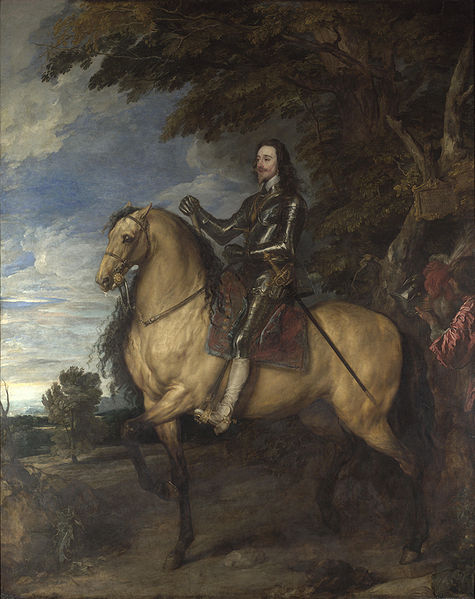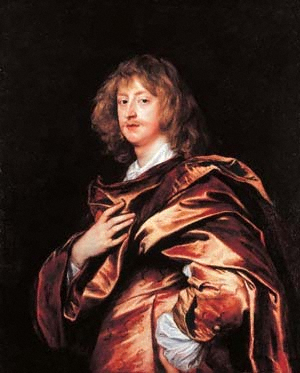<Back to Index>
- Painter Peter Paul Rubens, 1577
- Painter Anthony van Dyck, 1599
PAGE SPONSOR
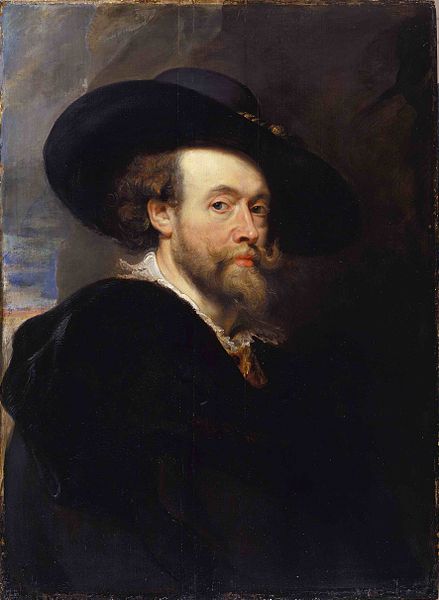
Sir Peter Paul Rubens (28 June 1577 – 30 May 1640), was a Flemish Baroque painter, and a proponent of an extravagant Baroque style that emphasized movement, color, and sensuality. He is well known for his Counter Reformation altarpieces, portraits, landscapes, and history paintings of mythological and allegorical subjects.
In addition to running a large studio in Antwerp that produced
paintings popular with nobility and art collectors throughout Europe,
Rubens was a classically educated humanist scholar, art collector and
diplomat who was knighted by both Philip IV, King of Spain, and
Charles I, King of England.
Rubens was born in Siegen, Westphalia, to Jan Rubens and Maria Pypelincks. His father, a Calvinist, and mother fled Antwerp for Cologne in 1568, after increased religious turmoil and persecution of Protestants during the rule of the Spanish Netherlands by the Duke of Alba. Jan Rubens became the legal advisor (and lover) of Anna of Saxony, the second wife of William I of Orange, and settled at her court in Siegen in 1570. Following Jan Rubens' imprisonment for the affair, Peter Paul Rubens was born in 1577. The family returned to Cologne the next year. In 1589, two years after his father's death, Rubens moved with his mother to Antwerp, where he was raised as a Catholic. Religion figured prominently in much of his work and Rubens later became one of the leading voices of the Catholic Counter Reformation style of painting (he had said "My passion comes from the heavens, not from earthly musings").
In Antwerp, Rubens received a humanist education, studying Latin and
classical literature. By fourteen he began his artistic apprenticeship with Tobias Verhaeght.
Subsequently, he studied under two of the city's leading painters of
the time, the late Mannerist artists Adam van Noort and Otto van Veen.
Much of his earliest training involved copying earlier artists' works,
such as woodcuts by Hans Holbein the Younger and Marcantonio Raimondi's
engravings after Raphael. Rubens completed his education in 1598, at
which time he entered the Guild of St. Luke as an independent master.
In 1600, Rubens traveled to Italy. He stopped first in Venice, where he saw paintings by Titian, Veronese and Tintoretto, before settling in Mantua at the court of Duke Vincenzo I Gonzaga. The coloring and compositions of Veronese and Tintoretto had an immediate effect on Rubens's painting, and his later, mature style was profoundly influenced by Titian. With financial support from the Duke, Rubens traveled to Rome by way of Florence in 1601. There, he studied classical Greek and Roman art and copied works of the Italian masters; the Hellenistic sculpture Laocoön and his Sons was especially influential on him, as was the art of Michelangelo, Raphael and Leonardo da Vinci. He was also influenced by the recent, highly naturalistic paintings by Caravaggio. He later made a copy of that artist's Entombment of Christ, recommended that his patron, the Duke of Mantua, purchase The Death of the Virgin (Louvre), and was instrumental in the acquisition of The Madonna of the Rosary (Kunsthistorisches Museum, Vienna) for the Dominican church in Antwerp. During this first stay in Rome, Rubens completed his first altarpiece commission, St. Helena with the True Cross for the Roman church of Santa Croce in Gerusalemme.
Rubens traveled to Spain on a diplomatic mission in 1603, delivering gifts from the Gonzagas to the court of Philip III. While there, he studied the extensive collections of Raphael and Titian that had been collected by Philip II. He also painted an equestrian portrait of the Duke of Lerma during his stay (Prado, Madrid) that demonstrates the influence of works like Titian's Charles V at Mühlberg (1548; Prado, Madrid). This journey marked the first of many during his career that combined art and diplomacy.
He returned to Italy in 1604, where he remained for the next four years, first in Mantua and then in Genoa and Rome. In Genoa, Rubens painted numerous portraits, such as the Marchesa Brigida Spinola - Doria (National Gallery of Art, Washington, D.C.), and the portrait of Maria di Antonio Serra Pallavicini, in a style that influenced later paintings by Anthony van Dyck, Joshua Reynolds and Thomas Gainsborough. He also began a book illustrating the palaces in the city. From 1606 to 1608, he was mostly in Rome. During this period Rubens received, with the assistance of Cardinal Jacopo Serra (the brother of Maria Pallavicini), his most important commission to date for the High Altar of the city's most fashionable new church, Santa Maria in Vallicella also known as the Chiesa Nuova.
The subject was to be St. Gregory the Great and important local saints adoring an icon of the Virgin and Child. The first version, a single canvas (now at the Musée des Beaux - Arts, Grenoble), was immediately replaced by a second version on three slate panels that permits the actual miraculous holy image of the "Santa Maria in Vallicella" to be revealed on important feast days by a removable copper cover, also painted by the artist.
Rubens’ experiences in Italy continued to influence his work. He
continued to write many of his letters and correspondences in Italian,
signed his name as "Pietro Paolo Rubens", and spoke longingly of
returning to the peninsula — a hope that never materialized.
Upon hearing of his mother's illness in 1608, Rubens planned his departure from Italy for Antwerp. However, she died before he arrived home. His return coincided with a period of renewed prosperity in the city with the signing of Treaty of Antwerp in April 1609, which initiated the Twelve Years' Truce. In September 1609 Rubens was appointed as court painter by Albert VII, Archduke of Austria and Infanta Isabella Clara Eugenia of Spain, sovereigns of the Low Countries. He received special permission to base his studio in Antwerp instead of at their court in Brussels, and to also work for other clients. He remained close to the Archduchess Isabella until her death in 1633, and was called upon not only as a painter but also as an ambassador and diplomat. Rubens further cemented his ties to the city when, on 3 October 1609, he married Isabella Brant, the daughter of a leading Antwerp citizen and humanist, Jan Brant.
In 1610, Rubens moved into a new house and studio that he designed. Now the Rubenshuis
Museum, the Italian influenced villa in the center of Antwerp
accommodated his workshop, where he and his apprentices made most of the
paintings, and his personal art collection and library, both among the
most extensive in Antwerp. During this time he built up a studio with
numerous students and assistants. His most famous pupil was the young Anthony van Dyck,
who soon became the leading Flemish portraitist and collaborated
frequently with Rubens. He also often collaborated with the many
specialists active in the city, including the animal painter Frans Snyders who contributed the eagle to Prometheus Bound, and his good friend the flower painter Jan Brueghel the Elder.
Altarpieces such as The Raising of the Cross (1610) and The Descent from the Cross (1611 – 1614) for the Cathedral of Our Lady were particularly important in establishing Rubens as Flanders' leading painter shortly after his return. The Raising of the Cross, for example, demonstrates the artist's synthesis of Tintoretto's Crucifixion for the Scuola Grande di San Rocco in Venice, Michelangelo's dynamic figures and Rubens's own personal style. This painting has been held as a prime example of Baroque religious art.
Rubens used the production of prints and book title pages, especially for his friend Balthasar Moretus,
the owner of the large Plantin - Moretus publishing house, to extend
his fame throughout Europe during this part of his career. With the
exception of a couple of brilliant etchings, he only produced drawings
for these himself, leaving the printmaking to specialists, such as Lucas
Vorsterman. He recruited a number of engravers trained by Goltzius, who he carefully schooled in the more vigorous style he wanted. He also designed the last significant woodcuts
before the 19th century revival in the technique. Rubens established
copyright for his prints, most significantly in Holland, where his work
was widely copied through prints. In addition he established copyrights
for his work in England, France and Spain.
In 1621, the Queen Mother of France, Marie de' Medici, commissioned Rubens to paint two large allegorical cycles celebrating her life and the life of her late husband, Henry IV, for the Luxembourg Palace in Paris. The Marie de' Medici cycle (now in the Louvre) was installed in 1625, and although he began work on the second series it was never completed. Marie was exiled from France in 1630 by her son, Louis XIII, and died in 1642 in the same house in Cologne where Rubens had lived as a child.
After the end of the Twelve Years' Truce in 1621, the Spanish Habsburg rulers entrusted Rubens with a number of diplomatic missions. In 1624 the French ambassador wrote from Brussels: "Rubens is here to take the likeness of the prince of Poland, by order of the infanta" (Prince Władysław IV Vasa arrived in Brussels as the personal guest of the Infanta on 2 September 1624).
Between 1627 and 1630, Rubens's diplomatic career was particularly
active, and he moved between the courts of Spain and England in an
attempt to bring peace between the Spanish Netherlands and the United Provinces.
He also made several trips to the northern Netherlands as both an
artist and a diplomat. At the courts he sometimes encountered the
attitude that courtiers should not use their hands in any art or trade,
but he was also received as a gentleman by many. It was during this
period that Rubens was twice knighted, first by Philip IV of Spain in
1624, and then by Charles I of England in 1630. He was awarded an
honorary Master of Arts degree from Cambridge University in 1629.
Rubens was in Madrid for eight months in 1628 – 1629. In addition to diplomatic negotiations, he executed several important works for Philip IV and private patrons. He also began a renewed study of Titian's paintings, copying numerous works including the Madrid Fall of Man (1628 – 29). During this stay, he befriended the court painter Diego Velázquez and the two planned to travel to Italy together the following year. Rubens, however, returned to Antwerp and Velázquez made the journey without him.
His stay in Antwerp was brief, and he soon traveled on to London where he remained until April 1630. An important work from this period is the Allegory of Peace and War (1629; National Gallery, London). It illustrates the artist's strong concern for peace, and was given to Charles I as a gift.
While Rubens's international reputation with collectors and nobility
abroad continued to grow during this decade, he and his workshop also
continued to paint monumental paintings for local patrons in Antwerp.
The Assumption of the Virgin Mary (1625–6) for the Cathedral of Antwerp is one prominent example.
Rubens's last decade was spent in and around Antwerp. Major works for foreign patrons still occupied him, such as the ceiling paintings for the Banqueting House at Inigo Jones's Palace of Whitehall, but he also explored more personal artistic directions.
In 1630, four years after the death of his first wife, the 53 year old painter married 16 year old Hélène Fourment. Hélène inspired the voluptuous figures in many of his paintings from the 1630s, including The Feast of Venus (Kunsthistorisches Museum, Vienna), The Three Graces (Prado, Madrid) and The Judgment of Paris (Prado, Madrid). In the latter painting, which was made for the Spanish court, the artist's young wife was recognized by viewers in the figure of Venus. In an intimate portrait of her, Hélène Fourment in a Fur Wrap, also known as Het Pelsken, Rubens's wife is even partially modeled after classical sculptures of the Venus Pudica, such as the Medici Venus.
In 1635, Rubens bought an estate outside of Antwerp, the Steen, where he spent much of his time. Landscapes, such as his Château de Steen with Hunter (National Gallery, London) and Farmers Returning from the Fields (Pitti Gallery, Florence), reflect the more personal nature of many of his later works. He also drew upon the Netherlandish traditions of Pieter Bruegel the Elder for inspiration in later works like Flemish Kermis (c. 1630; Louvre, Paris).
Rubens died from heart failure, which was a result of his chronic gout
on 30 May 1640. He was interred in Saint Jacob's church, Antwerp. The
artist had eight children, three with Isabella and five with Hélène; his
youngest child was born eight months after his death.
Rubens was a prolific artist. His commissioned works were mostly religious subjects, "history" paintings, which included mythological subjects, and hunt scenes. He painted portraits, especially of friends, and self portraits, and in later life painted several landscapes. Rubens designed tapestries and prints, as well as his own house. He also oversaw the ephemeral decorations of the Joyous Entry into Antwerp by the Cardinal - Infante Ferdinand in 1635.
His drawings are mostly extremely forceful but not detailed; he also made great use of oil sketches as preparatory studies. He was one of the last major artists to make consistent use of wooden panels as a support medium, even for very large works, but he used canvas as well, especially when the work needed to be sent a long distance. For altarpieces he sometimes painted on slate to reduce reflection problems.
His fondness of painting full figured women gave rise to the terms 'Rubensian' or 'Rubenesque' for plus sized women. The term 'Rubensiaans' is also commonly used in Dutch to denote such women.
Paintings can be divided into three categories: those he painted by himself, those he painted in part (mainly hands and faces), and those he only supervised. He had, as was usual at the time, a large workshop with many apprentices and students, some of whom, such as Anthony Van Dyck, became famous in their own right. He also often sub-contracted elements such as animals or still life in large compositions to specialists such as Frans Snyders, or other artists such as Jacob Jordaens.
At a Sotheby's auction on 10 July 2002, Rubens' newly discovered painting Massacre of the Innocents sold for £49.5 million ($76.2 million) to Lord Thomson. It is a current record for an Old Master painting.
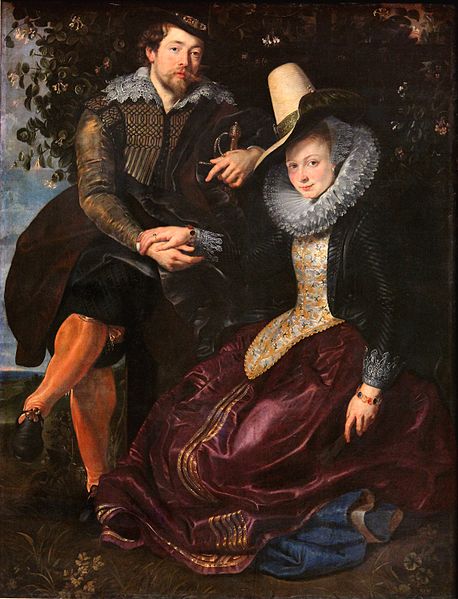
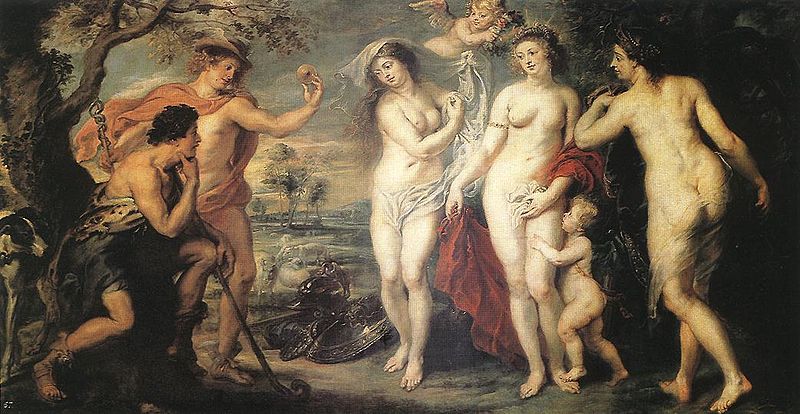
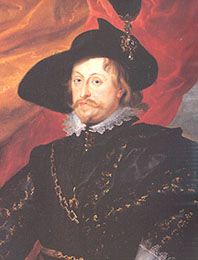
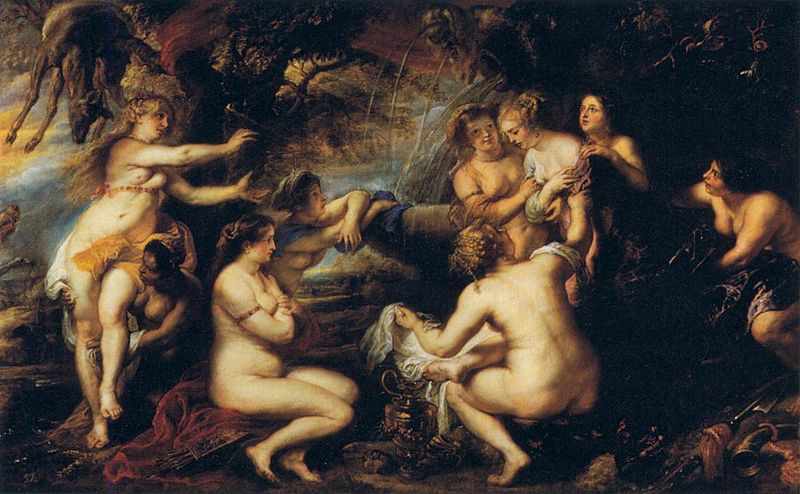
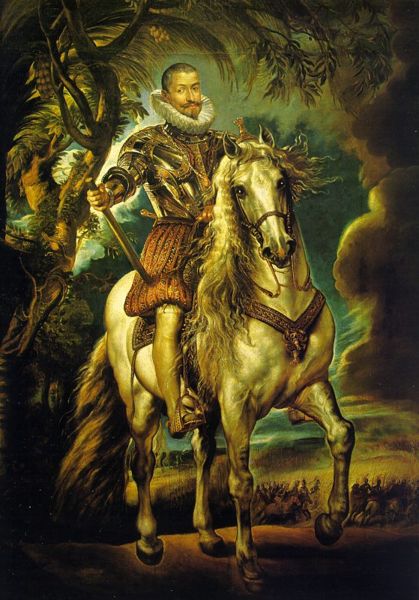
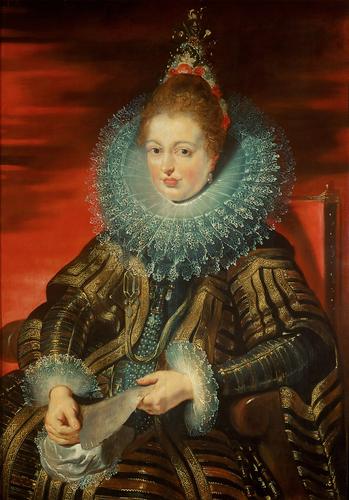
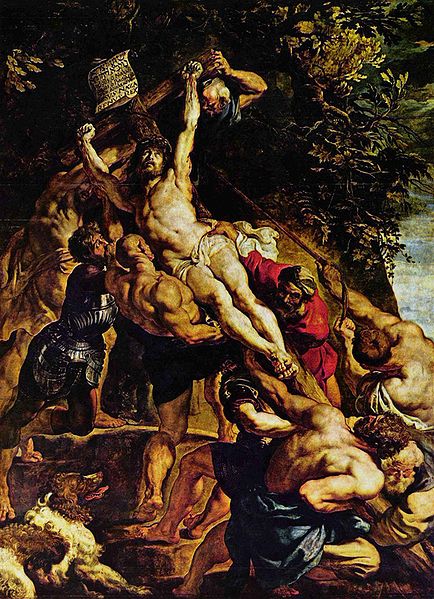
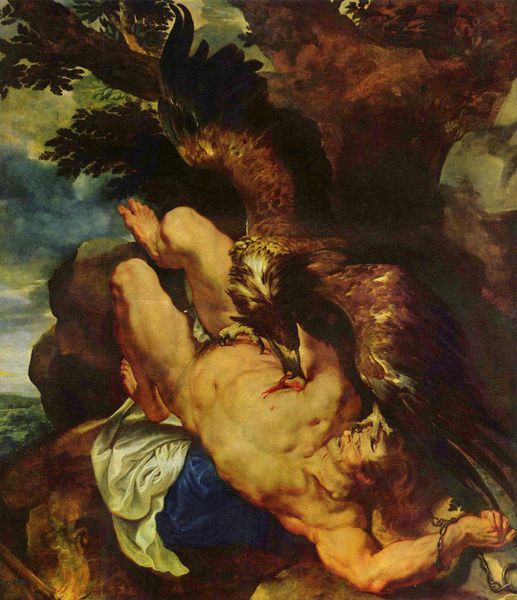
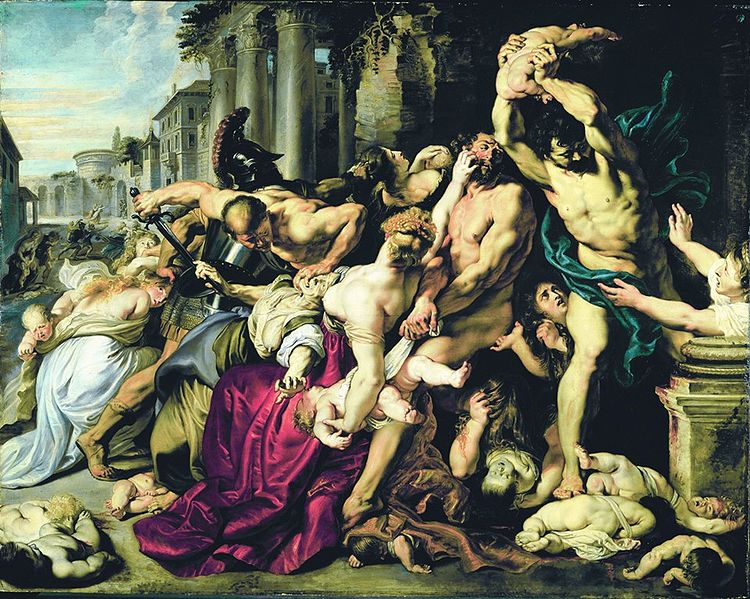
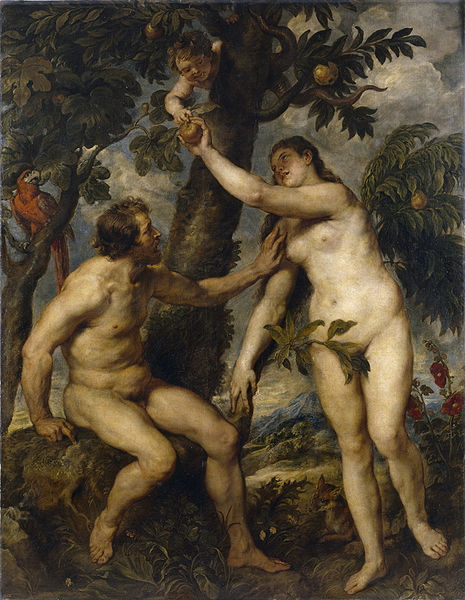
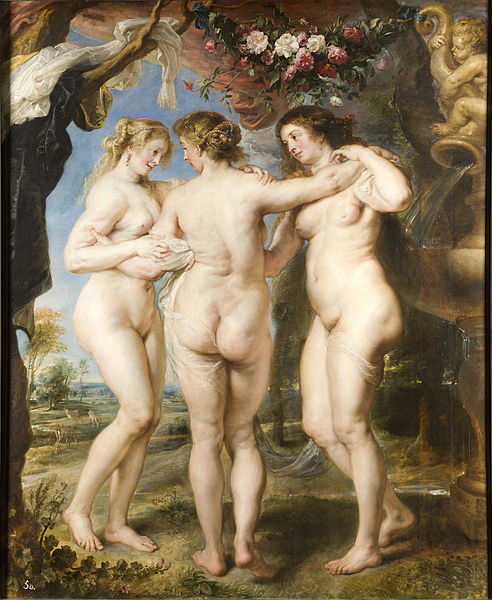
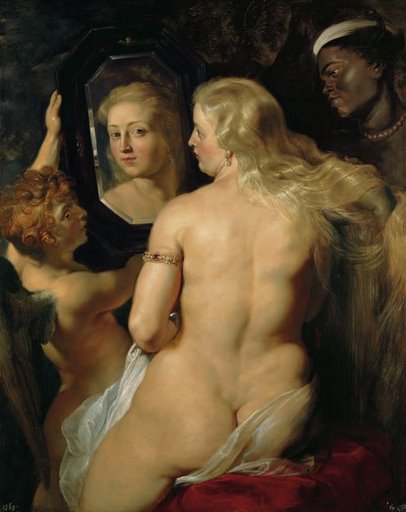
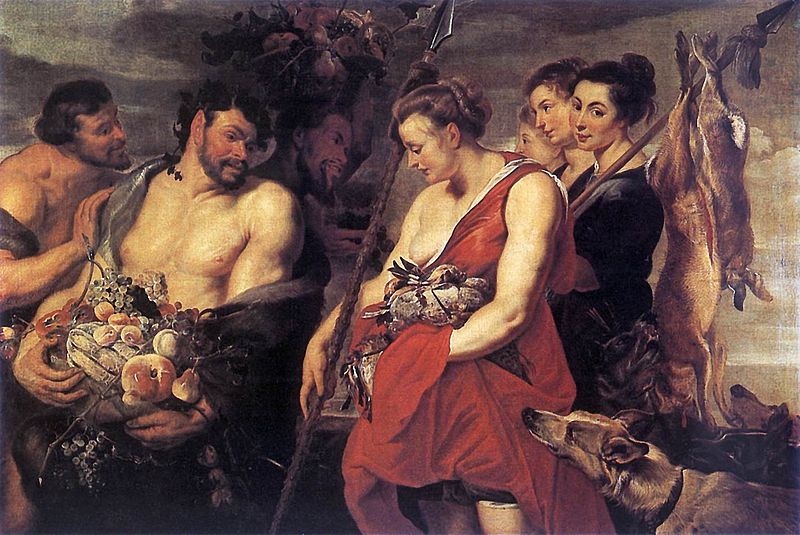
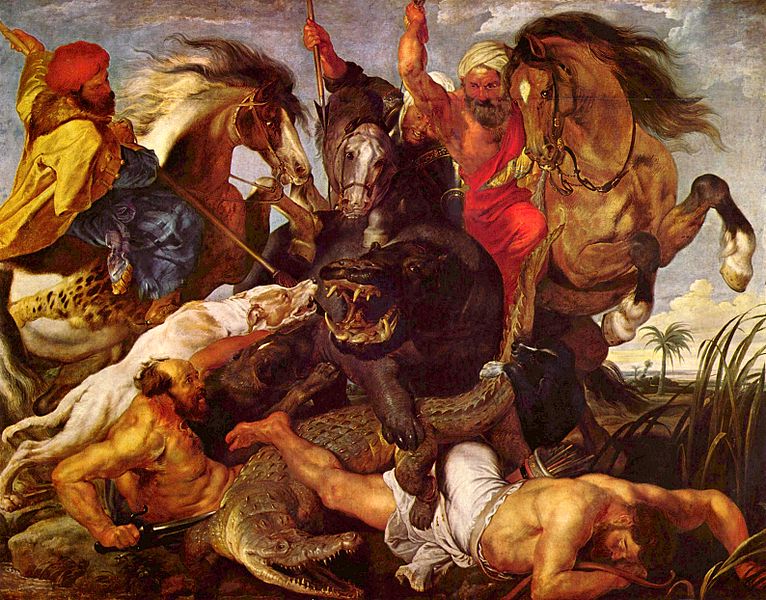
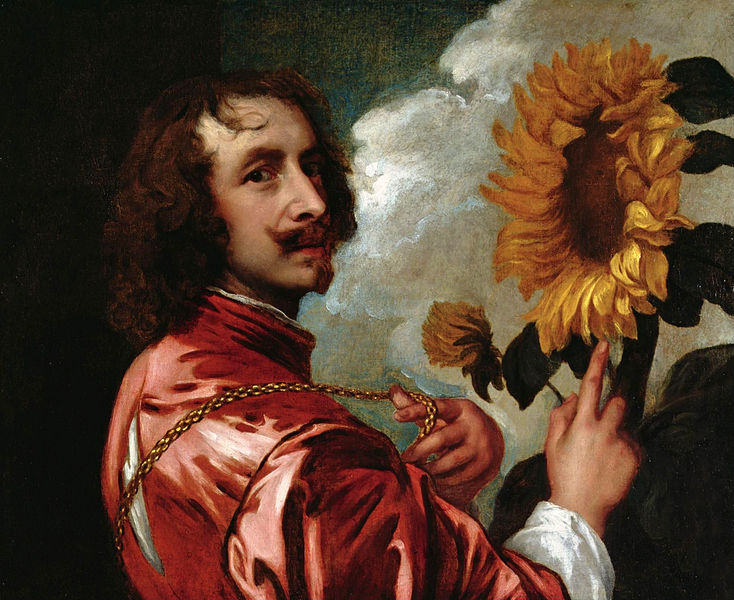
Sir Anthony van Dyck (22 March 1599 – 9 December 1641) was a Flemish Baroque artist who became the leading court painter in England. He is most famous for his portraits of Charles I of England and his family and court, painted with a relaxed elegance that was to be the dominant influence on English portrait painting for the next 150 years. He also painted biblical and mythological subjects, displayed outstanding facility as a draftsman, and was an important innovator in watercolor and etching.
Antoon van Dyck (his Flemish name) was born to prosperous parents in Antwerp. His talent was evident very early, and he was studying painting with Hendrick van Balen by 1609, and became an independent painter around 1615, setting up a workshop with his even younger friend Jan Brueghel the Younger. By the age of fifteen he was already a highly accomplished artist, as his Self portrait, 1613 – 14, shows. He was admitted to the Antwerp painters' Guild of Saint Luke as a free master by February 1618.
Within a few years he was to be the chief assistant to the dominant master of Antwerp, and the whole of Northern Europe, Peter Paul Rubens, who made much use of sub-contracted artists as well as his own large workshop. His influence on the young artist was immense; Rubens referred to the nineteen year old van Dyck as "the best of my pupils". The origins and exact nature of their relationship are unclear; it has been speculated that Van Dyck was a pupil of Rubens from about 1613, as even his early work shows little trace of van Balen's style, but there is no clear evidence for this. At the same time the dominance of Rubens in the small and declining city of Antwerp probably explains why, despite his periodic returns to the city, van Dyck spent most of his career abroad. In 1620, in Rubens's contract for the major commission for the ceiling of the Jesuit church at Antwerp (now destroyed), van Dyck is specified as one of the "discipelen" who was to execute the paintings to Rubens' designs.
In 1620, at the instigation of the Duke of Buckingham, van Dyck went to England for the first time where he worked for King James I & VI, receiving £100. It was in London in the collection of Earl of Arundel that he first saw the work of Titian, whose use of color and subtle modeling of form would prove transformational, offering a new stylistic language that would enrich the compositional lessons learned from Rubens.
After about four months he returned to Flanders, but moved on in late 1621 to Italy, where he remained for 6 years, studying the Italian masters and beginning his career as a successful portraitist. He was already presenting himself as a figure of consequence, annoying the rather bohemian Northern artist's colony in Rome, says Bellori, by appearing with "the pomp of Xeuxis ... his behavior was that of a nobleman rather than an ordinary person, and he shone in rich garments; since he was accustomed in the circle of Rubens to noblemen, and being naturally of elevated mind, and anxious to make himself distinguished, he therefore wore — as well as silks — a hat with feathers and brooches, gold chains across his chest, and was accompanied by servants."
He was mostly based in Genoa, although he also traveled extensively
to other cities, and stayed for some time in Palermo in Sicily. For the
Genoese aristocracy, then in a final flush of prosperity, he developed a
full length portrait style, drawing on Veronese and Titian as well as
Rubens' style from his own period in Genoa, where
extremely tall but graceful figures look down on the viewer with great
hauteur. In 1627, he went back to Antwerp where he remained for five
years, painting more affable portraits which still made his Flemish
patrons look as stylish as possible. A life size group portrait of
twenty - four City Councillors of Brussels he painted for the council
chamber was destroyed in 1695.
He was evidently very charming to his patrons, and, like Rubens, well
able to mix in aristocratic and court circles, which added to his
ability to obtain commissions. By 1630 he was described as the court
painter of the Habsburg Governor of Flanders, the Archduchess Isabella.
In this period he also produced many religious works, including large altarpieces, and began his printmaking.
King Charles I was the most passionate and generous collector of art among the British monarchs, and saw art as a way of promoting his grandiose view of the monarchy. In 1628 he bought the fabulous collection that the Gonzagas of Mantua were forced to dispose of, and he had been trying since his accession in 1625 to bring leading foreign painters to England. In 1626 he was able to persuade Orazio Gentileschi to settle in England, later to be joined by his daughter Artemesia and some of his sons. Rubens was an especial target, who eventually came on a diplomatic mission, which included painting, in 1630, and later supplied more paintings from Antwerp. He was very well treated during his nine month visit, during which he was knighted. Charles' court portraitist, Daniel Mytens, was a somewhat pedestrian Fleming. Charles was extremely short (less than five feet tall) and presented challenges to a portraitist.
Van Dyck had remained in touch with the English court, and had helped
King Charles' agents in their search for pictures. He had also sent
back some of his own works, including a portrait (1623) of himself with Endymion Porter, one of Charles's agents, a mythology (Rinaldo and Armida,
1629, now in the Baltimore Museum of Art), and a religious work for the
Queen. He had also painted Charles's sister, Queen Elizabeth of Bohemia
in the Hague
in 1632. In April that year, van Dyck returned to London, and was taken
under the wing of the court immediately, being knighted in July and at
the same time receiving a pension of £200 per year, in the grant of
which he was described as principalle Paynter in ordinary to their majesties.
He was well paid for paintings in addition to this, at least in theory,
as King Charles did not actually pay over his pension for five years,
and reduced the price of many paintings. He was provided with a house on
the river at Blackfriars, then just outside the City and hence avoiding
the monopoly of the Painters Guild. A suite of rooms in Eltham Palace,
no longer used by the Royal family, was also provided as a country
retreat. His Blackfriars studio was frequently visited by the King and
Queen (later a special causeway was built to ease their access), who
hardly sat for another painter whilst van Dyck lived.
He was an immediate success in England, rapidly painting a large number of portraits of the King and Queen Henrietta Maria, as well as their children. Many portraits were done in several versions, to be sent as diplomatic gifts or given to supporters of the increasingly embattled king. Altogether van Dyck has been estimated to have painted forty portraits of King Charles himself, as well as about thirty of the Queen, nine of Earl of Strafford and multiple ones of other courtiers. He painted many of the court, and also himself and his mistress, Margaret Lemon. In England he developed a version of his style which combined a relaxed elegance and ease with an understated authority in his subjects which was to dominate English portrait painting to the end of the 18th century. Many of these portraits have a lush landscape background. His portraits of Charles on horseback updated the grandeur of Titian's Emperor Charles V, but even more effective and original is his portrait of Charles dismounted in the Louvre: "Charles is given a totally natural look of instinctive sovereignty, in a deliberately informal setting where he strolls so negligently that he seems at first glance nature's gentleman rather than England's King". Although his portraits have created the classic idea of "Cavalier" style and dress, in fact a majority of his most important patrons in the nobility, such as Lord Wharton and the Earls of Bedford, Northumberland and Pembroke, took the Parliamentarian side in the English Civil War that broke out soon after his death.
Van Dyck became a "denizen", effectively a citizen, in 1638 and married Mary, the daughter of Patrick Ruthven, who, although the title was forfeited, styled himself Lord Ruthven. She was a Lady in waiting to the Queen, in 1639 - 40; this may have been instigated by the King in an attempt to keep him in England. He had spent most of 1634 in Antwerp, returning the following year, and in 1640 - 41, as the Civil War loomed, spent several months in Flanders and France. In 1640 he accompanied prince John Casimir of Poland after he was freed from French imprisonment; he also painted the prince's portrait. He left again in the summer of 1641, but fell seriously ill in Paris and returned hurriedly to London, where he died soon after in his house at Blackfriars. His widow later married Sir Richard Pryse, 1st Baronet of Gogerddan. Van Dyck left a daughter each by his wife and mistress, the first only ten days old. Both were provided for, and both ended up living in Flanders.
He was buried in Old St. Paul's Cathedral, where the king erected a monument in his memory:
Anthony returned to England, and shortly afterwards he died in
London, piously rendering his spirit to God as a good Catholic, in the
year 1641. He was buried in St. Paul's, to the sadness of the king and
court and the universal grief of lovers of painting. For all the riches
he had acquired, Anthony van Dyck left little property, having spent
everything on living magnificently, more like a prince than a painter.
With the partial exception of Holbein, van Dyck and his exact contemporary Diego Velázquez were the first painters of pre-eminent talent to work mainly as Court portraitists. The slightly younger Rembrandt was also to work mainly as a portraitist for a period. In the contemporary theory of the hierarchy of genres portrait painting came well below history painting (which covered religious scenes also), and for most major painters portraits were a relatively small part of their output, in terms of the time spent on them (being small, they might be numerous in absolute terms). Rubens for example mostly painted portraits only of his immediate circle, but though he worked for most of the courts of Europe, he avoided exclusive attachment to any of them.
A variety of factors meant that in the 17th century demand for
portraits was stronger than for other types of work. Van Dyck tried to
persuade Charles to commission him to do a large scale series of works
on the history of the Order of the Garter for the Banqueting House,
Whitehall, for which Rubens had earlier done the huge ceiling paintings
(sending them from Antwerp).
A sketch for one wall remains, but by 1638 Charles was too short of money to proceed. This was a problem Velázquez did not have, but equally van Dyck's daily life was not encumbered by trivial court duties as Velázquez's was. In his visits to Paris in his last years van Dyck tried to obtain the commission to paint the Grande Gallerie of the Louvre without success.
A list of history paintings produced by van Dyck in England survives, by Bellori, based on information by Sir Kenelm Digby; none of these still appear to survive, although the Eros and Psyche done for the King does. But many other works, rather more religious than mythological, do survive, and though they are very fine, they do not reach the heights of Velázquez's history paintings. Earlier ones remain very much within the style of Rubens, although some of his Sicilian works are interestingly individual.
Van Dyck's portraits certainly flattered more than Velázquez's; when Sophia, later Electoress of Hanover, first met Queen Henrietta Maria, in exile in Holland in 1641, she wrote: "Van Dyck's handsome portraits had given me so fine an idea of the beauty of all English ladies, that I was surprised to find that the Queen, who looked so fine in painting, was a small woman raised up on her chair, with long skinny arms and teeth like defense works projecting from her mouth..." Some critics have blamed van Dyck for diverting a nascent tougher English portrait tradition, of painters such as William Dobson, Robert Walker and Issac Fuller into what certainly became elegant blandness in the hands of many of van Dyck's successors, like Lely or Kneller. The conventional view has always been more favorable: "When Van Dyck came hither he brought Face Painting to us; ever since which time ... England has excel'd all the World in that great Branch of the Art’ (Jonathan Richardson: An Essay on the Theory of Painting, 1715, 41). Thomas Gainsborough is reported to have said on his deathbed "We are all going to heaven, and Van Dyck is of the Company."
A fairly small number of landscape pen and wash drawings or watercolors made in England played an important part in introducing the Flemish watercolor landscape tradition to England. Some are studies, which reappear in the background of paintings, but many are signed and dated and were probably regarded as finished works to be given as presents. Several of the most detailed are of Rye, a port for ships to the Continent, suggesting that van Dyck did them casually whilst waiting for wind or tide to improve.
Probably during his period in Antwerp after his return from Italy, van Dyck began his Iconography,
eventually a very large series of prints with half length portraits of
eminent contemporaries. Van Dyck produced drawings, and for eighteen of
the portraits he himself etched with great brilliance the heads and the
main outlines of the figure, for an engraver
to work up: "Portrait etching had scarcely had an existence before his
time, and in his work it suddenly appears at the highest point ever
reached in the art".
However for most of the series he left the whole printmaking work to specialists, who mostly engraved everything after his drawings. His own etched plates appear not to have been published commercially until after his death, and early states are very rare. Most of his plates were printed after only his work had been done; some exist in further states after engraving had been added, sometimes obscuring his etching. He continued to add to the series until at least his departure for England, and presumably added Inigo Jones whilst in London.
The series was a great success, but was his only venture into printmaking; portraiture probably paid better, and he was constantly in demand. At his death there were eighty plates by others, of which fifty - two were of artists, as well as his own eighteen. The plates were bought by a publisher; with the plates reworked periodically as they wore out they continued to be printed for centuries, and the series added to, so that it reached over two hundred portraits by the late 18th century. In 1851 the plates were bought by the Calcographie du Louvre.
The Iconography was highly influential as a commercial model for reproductive printmaking; now forgotten series of portrait prints were enormously popular until the advent of photography: "the importance of this series was enormous, and it provided a repertory of images that were plundered by portrait painters throughout Europe over the next couple of centuries". Van Dyck's brilliant etching style, which depended on open lines and dots, was in marked contrast to that of the other great portraitist in prints of the period, Rembrandt, and had little influence until the 19th century, when it had a great influence on artists such as Whistler in the last major phase of portrait etching. Hyatt Mayor wrote: "Etchers have studied Van Dyck ever since, for they can hope to approximate his brilliant directness, whereas nobody can hope to approach the complexity of Rembrandt's portraits".
His great success compelled van Dyck to maintain a large workshop in
London, a studio which was to become "virtually a production line for
portraits". According to a visitor to his studio he usually only made a
drawing on paper, which was then enlarged onto canvas by an assistant;
he then painted the head himself. The clothes were left at the studio
and often sent out to specialists. In his last years these studio collaborations accounted for some decline in the quality of work.
In addition many copies untouched by him, or virtually so, were
produced by the workshop, as well as by professional copyists and later
painters; the number of paintings ascribed to him had by the 19th
century become huge, as with Rembrandt, Titian
and others. However, most of his assistants and copyists could not
approach the refinement of his manner, so compared to many masters
consensus among art historians on attributions to him is usually relatively easy to reach, and museum labeling is now mostly updated (country house
attributions may be more dubious in some cases). The relatively few
names of his assistants that are known are Dutch or Flemish; he probably
preferred to use trained Flemings, as no English equivalent training
yet existed. Adriaen Hanneman (1604 – 71) returned to his native Hague in 1638 to become the leading portraitist there.
Van Dyck's enormous influence of English art does not come from a
tradition handed down through his pupils; in fact it is not possible to
document a connection to his studio for any English painter of any
significance.
Most major museum collections include at least one Van Dyck, but easily the most outstanding collection is the Royal Collection, which still contains many of his paintings of the Royal Family. The National Gallery, London (fourteen works), The Museo del Prado (Spain) (twenty - five works), The Louvre in Paris (eighteen works), The Alte Pinakothek in Munich, National Museum of Serbia in Belgrade, The National Gallery of Art in Washington DC and the Frick Collection have splendid examples of all phases of his portrait style.
Tate Britain held the exhibition Van Dyck & Britain in 2009.
